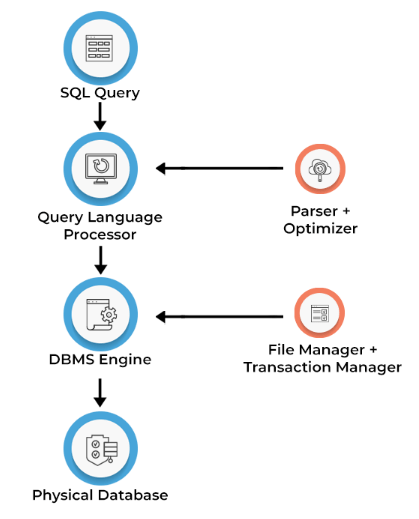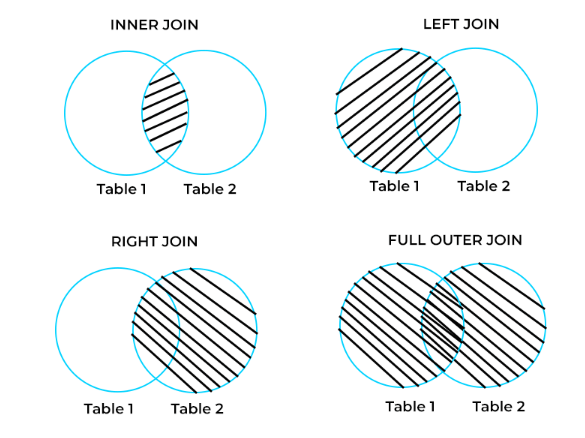
- Introduction to SQL and Its Importance
- Key Categories of SQL Commands
- What is DDL (Data Definition Language)?
- Common DDL Commands Explained
- What is DML (Data Manipulation Language)?
- Common DML Commands Explained
- Practical Use Cases of DDL and DML
- Conclusion
Introduction to SQL and Its Importance
Structured Query Language, commonly known as SQL, is the standard language used worldwide for managing and manipulating relational databases. It is an essential skill for professionals across various fields such as web development, data science, business analytics, and application engineering. SQL provides a powerful and flexible way to interact with databases, enabling users to perform a wide range of operations including creating new data structures, retrieving specific data, updating existing information, and deleting unnecessary records. At its core, SQL acts as the bridge between users and the complex storage of data, simplifying the process of organizing and accessing information efficiently. Two important subsets of SQL that every database professional should understand in Database Training are Data Definition Language (DDL) and Data Manipulation Language (DML). DDL commands focus on defining and modifying the structure of database objects like tables, indexes, and schemas. With DDL, users can create new tables, alter existing ones, or drop tables that are no longer needed. This control over database structure is fundamental to ensuring the data is stored in an organized and optimized manner. On the other hand, DML deals with the data inside those structures. It includes commands such as SELECT, INSERT, UPDATE, and DELETE, which allow users to retrieve data, add new records, modify existing information, or remove unwanted data. Mastering both DDL and DML empowers users to fully manage not only the data itself but also the way it is stored and maintained. Overall, SQL remains a foundational technology in data management and is indispensable for anyone who works with data. Its continued relevance in modern applications makes it a valuable skill that opens doors to many career opportunities in technology and business sectors.
Do You Want to Learn More About Database? Get Info From Our Database Online Training Today!
Key Categories of SQL Commands
SQL commands are broadly classified into several categories based on their functionality, each serving a specific purpose in managing databases. One of the primary categories is Data Definition Language, or DDL, which focuses on defining and managing database structures such as tables, indexes, and schemas. Using DDL commands, users can create new tables, alter existing structures, or delete tables when they are no longer needed in Types Of SQL Indexes. These commands are essential for setting up and modifying the architecture of a database. Another important category is Data Manipulation Language, or DML. This group of commands deals with the data inside the database objects, allowing users to insert new records, update existing data, delete unwanted information, and retrieve data. DML commands are fundamental to everyday database interactions and data processing.

Data Control Language, or DCL, is responsible for managing access permissions to the data. Common DCL commands like GRANT and REVOKE enable database administrators to control who can view or modify specific data, playing a vital role in database security and compliance. Transaction Control Language, or TCL, handles the execution of transactions within a database. Commands such as COMMIT and ROLLBACK allow users to save changes permanently or undo them, ensuring data integrity during complex operations. Lastly, Data Query Language, or DQL, primarily includes the SELECT statement, which is used to retrieve data based on specific criteria. Although all these categories are important, DDL and DML are the most frequently used in daily database management. A strong understanding of these two categories is crucial for both beginners learning SQL and advanced professionals who manage and optimize databases regularly. Together, these command types provide a comprehensive toolkit for efficient and secure database management.
What is DDL (Data Definition Language)?
- Definition: DDL stands for Data Definition Language, a subset of SQL commands used to define and modify the structure of database objects like tables, schemas, and indexes.
- Primary Purpose: DDL commands focus on the organization of data, how it is stored and structured, rather than the actual data stored within the tables.
- Common DDL Commands: Key commands include CREATE to make new tables or databases, ALTER to modify existing structures, DROP to delete objects, and TRUNCATE to remove all data from a table quickly.
- Schema Management: DDL helps in designing the overall schema by setting up tables, columns, data types, and constraints that define rules for the data in How To Start a Career in Database Administration.
- Automatic Commit Behavior: When you execute a DDL command, the changes are auto-committed, meaning they are immediately and permanently applied to the database.
- Irreversibility: Because DDL operations cannot be easily rolled back using standard SQL commands, users must exercise caution when running them to avoid unintended structural changes.
- Difference from DML: While DDL deals with the database structure, Data Manipulation Language (DML) commands like INSERT, UPDATE, and DELETE manage the data inside those structures.
- CREATE: This command is used to create new database objects such as tables, indexes, or views. For example, CREATE TABLE defines a new table with specified columns and data types.
- ALTER: Database Training ALTER modifies an existing database object. It allows you to add, delete, or change columns in a table, modify constraints, or rename objects without losing existing data.
- DROP: DROP deletes database objects permanently. For example, DROP TABLE removes a table and all its data from the database. Use it carefully, as it cannot be undone.
- TRUNCATE: TRUNCATE removes all rows from a table quickly but keeps the table structure intact. Unlike DELETE, it doesn’t log individual row deletions and cannot be rolled back in most databases.
- RENAME: RENAME changes the name of a database object, such as a table or column. This is useful during schema refactoring or reorganization.
- COMMENT: COMMENT adds descriptive text to database objects. This helps document the schema for better understanding and maintenance by developers or DBAs.
- COMMIT: Although not exclusive to DDL, COMMIT finalizes changes made by DDL commands since many DDL operations auto-commit, making changes permanent immediately after execution.
- SELECT: The most frequently used DML command, SELECT retrieves data from one or more tables. You can filter, sort, and aggregate data to generate reports or feed applications.
- INSERT: INSERT adds new rows into a table. You specify the columns and corresponding values to populate fresh data, whether single records or batches.
- UPDATE: UPDATE modifies existing data within a table. It allows you to change one or multiple columns for all or selected rows based on conditions.
- DELETE: DELETE removes rows from a table. You can delete specific records or clear entire tables (without dropping the table structure itself), What is a Transaction Processing System.
- MERGE: MERGE combines INSERT and UPDATE operations into one. It synchronizes two tables by updating existing records and inserting new ones based on matching conditions.
- CALL: CALL executes stored procedures that may include multiple DML operations. It helps modularize and automate complex data manipulations within the database.
- LOCK: LOCK controls concurrent data modifications to prevent conflicts and maintain data integrity during transactions. It’s essential in multi-user environments.
Would You Like to Know More About Database? Sign Up For Our Database Online Training Now!
Common DDL Commands Explained

What is DML (Data Manipulation Language)?
Data Manipulation Language, commonly known as DML, refers to a set of SQL commands that focus on managing and manipulating the actual data stored within database tables. While Data Definition Language (DDL) deals with the creation and modification of database structures such as tables, indexes, and schemas, DML is specifically concerned with the data contained inside those structures. The primary DML commands include INSERT, UPDATE, DELETE, and SELECT. INSERT is used to add new records to a table, UPDATE modifies existing data, DELETE removes unwanted records, and SELECT retrieves data based on specified criteria. These commands form the backbone of everyday database interactions and are essential for keeping data current, accurate, and meaningful in How To Become a Data Modeler. DML commands are frequently used by a range of professionals including application developers who build software, data analysts who extract insights, and database administrators responsible for maintaining data quality. One of the key characteristics that differentiate DML from DDL is that DML operations are transactional. This means changes made through DML commands are not automatically permanent. Instead, they can be committed to save the changes or rolled back to undo them if needed. This transactional nature helps ensure data integrity and consistency, especially when multiple operations need to succeed or fail as a group. By mastering DML, users can efficiently manipulate data to support business processes, reporting, and analytics. Understanding how to use DML effectively is a fundamental skill for anyone working with relational databases. It allows for dynamic interaction with data, enabling real-time updates, corrections, and data retrieval which are vital for responsive and reliable applications.
To Earn Your Database Certification, Gain Insights From Leading Blockchain Experts And Advance Your Career With ACTE’s Database Online Training Today!
Common DML Commands Explained
Practical Use Cases of DDL and DML
Data Definition Language (DDL) and Data Manipulation Language (DML) each play vital roles in the management and operation of databases, serving distinct but complementary purposes. Use cases of DDL include creating new tables to support the needs of a business application, such as setting up a customer or product table. When additional features or data points are required, DDL commands allow for adding new columns to existing tables. During application upgrades, obsolete tables that are no longer needed can be dropped to maintain database cleanliness and efficiency. Schema refactoring often involves renaming tables to better reflect their purpose or to align with updated business requirements. Additionally, DDL is used to set up constraints like primary keys or foreign keys and create indexes that optimize the speed and performance of queries. What is MongoDB Port These structural changes form the backbone of a well-designed database. On the other hand, DML commands focus on the actual data within those structures and handle daily data operations. Typical use cases of DML include populating a customer database with new entries using INSERT commands and updating stock quantities in an inventory management system to reflect real-time changes. Inactive users might be deleted from a web application to free up space and maintain data relevancy. Running daily SELECT queries helps generate business reports and extract insights crucial for decision-making. DML is also used to merge datasets from different sources, ensuring that data is accurate and comprehensive. Together, DDL and DML demonstrate how database structures are created and managed, while the data itself is manipulated and maintained. Their combined use supports the building and operation of robust, efficient, and scalable database systems that serve a wide range of business needs.
Preparing for a Database Job? Have a Look at Our Blog on Database Interview Questions and Answers To Ace Your Interview!
Conclusion
DDL and DML form the core foundation of Structured Query Language, providing the essential tools that developers and data professionals use to define, manipulate, and manage data efficiently within relational databases. Data Definition Language (DDL) allows users to create and modify the structure of database objects such as tables, indexes, and schemas, laying the groundwork for how data is stored and organized. Meanwhile, Data Manipulation Language (DML) enables the insertion, updating, deletion, and retrieval of the actual data stored within those structures. Together, these command sets empower professionals to build databases that are not only well-structured but also dynamically manageable, meeting the evolving needs of businesses and applications. Mastering DDL and DML in Database Training is a crucial step toward advancing your SQL proficiency. This knowledge unlocks numerous career opportunities, including roles like SQL Developer, who writes and optimizes queries; Database Administrator, responsible for maintaining database health and security; Data Analyst, who extracts and interprets data insights; Data Engineer, focused on building data pipelines and infrastructure; and Business Intelligence Developer, who creates reporting and visualization solutions. Each of these roles relies heavily on a solid understanding of how to define database schemas and manipulate data effectively. For anyone planning a career in data management, backend development, or analytics, developing a deep comprehension of DDL and DML commands is essential. By combining theoretical knowledge with hands-on practice, as well as adhering to best practices in database design and query optimization, you can build a robust skill set. This expertise is highly valued across industries in today’s data-driven world, positioning you for success in a competitive job market.


